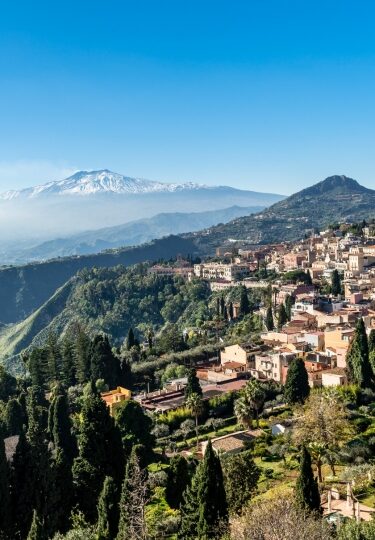Of all the cities and towns of Sicily, it’s perhaps Taormina, Italy, which is the most seductive. Set into the arid, cactus-studded flanks of Mount Tauro, this famous resort town teeters above the Bay of Naxos and offers wonderful, far-reaching views from its many outlooks.
At the foot of the mountain lies one of Italy’s best beaches in Isola Bella, while at its crown is the atmospheric Greek Theater. In between these two astonishing landmarks is a gorgeous resort town offering a maze of antique streets.
Boutiques line the basalt-paved high street of Corso Umberto and parks are shady with parasol-like pines. It seems that the entirety of Taormina, Italy, is designed to encourage you to linger—so why resist?
Why Visit Taormina
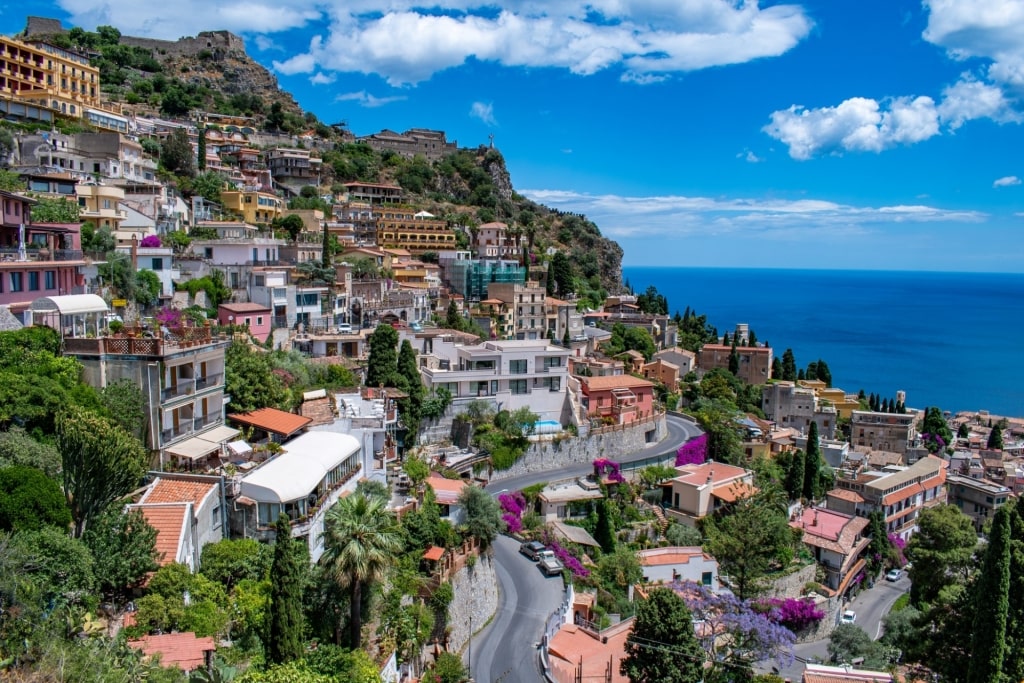
Taormina
Known as the “Pearl of the Mediterranean”, Taormina has been a sought-after vacation destination since Roman times. As probably the most perfect coastal resort town in Southern Italy, its popularity is entirely justified.
That’s a strong claim, but Taormina, Italy, has it all: incredible views over the coast and an occasionally very active volcano, capacious hotel bars that seem to float above the trees, and enough space that even in high season it doesn’t feel like a crush.
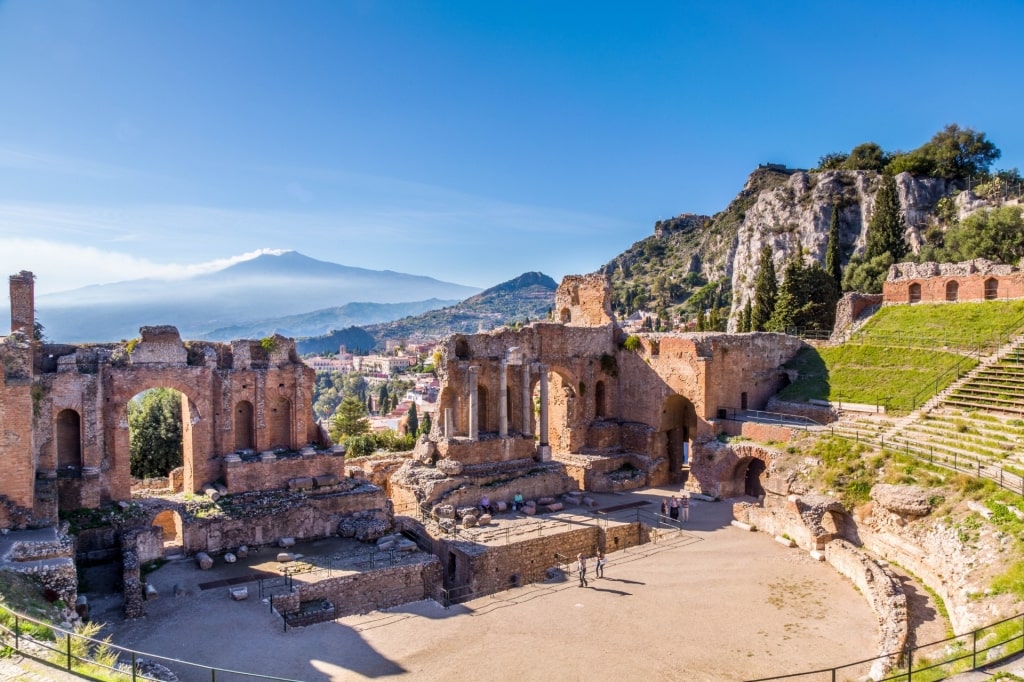
Greek Theater of Taormina
The town’s streets are characterized by gorgeous medieval buildings, many sympathetically restored, and others handsomely decayed. Amid it all, the Taorminesi have managed to fit in a sophisticated tier of Michelin-starred restaurants alongside the traditional and often outstanding trattorias.
History & Culture
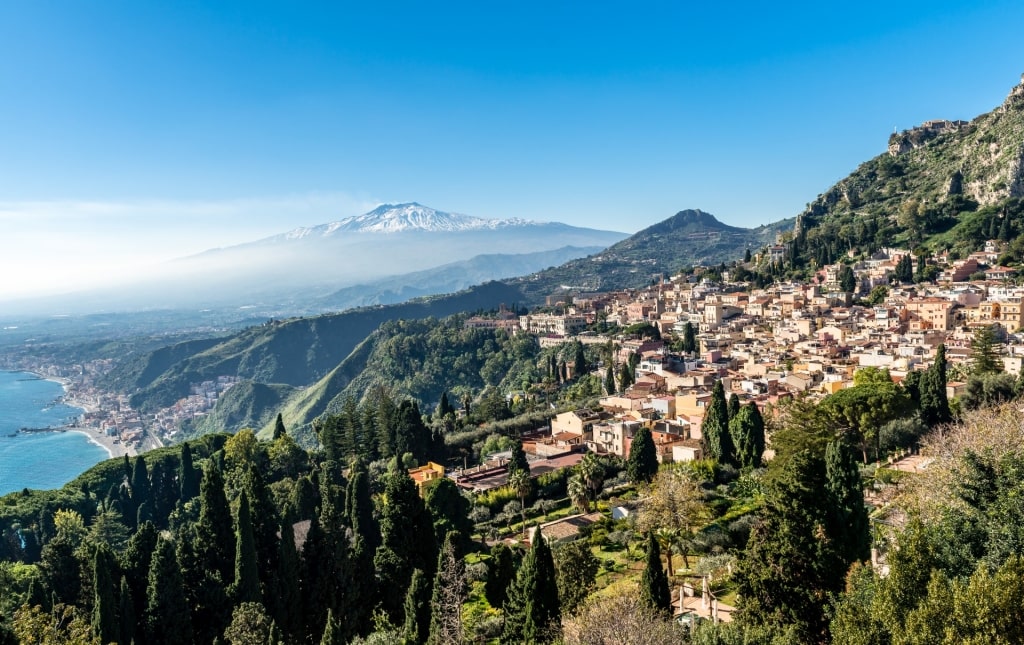
Taormina
Taormina’s history stretches back to the dim mists of the 4th century BC, when Dionysus the Tyrant of Syracuse ordered its construction on Mount Tauro. This elevated piece of heaven first became a vacation destination for the Roman upper classes when the empire seized control of the town around 200 years later.
Following this, nearly 2,000 years of history can be condensed into “the island changed hand”. Central to the Mediterranean, and tantalizingly balanced between Africa and Europe, Sicily saw significant periods of rule by Byzantines, the Arabs, the Normans, and the Spanish. Each empire left its cultural stamp upon this alluring European island.
It can be concluded that the emblem of Sicily devised by the ancient Greeks—the three legs around a medusa head—had failed in its purpose to frighten off invaders.
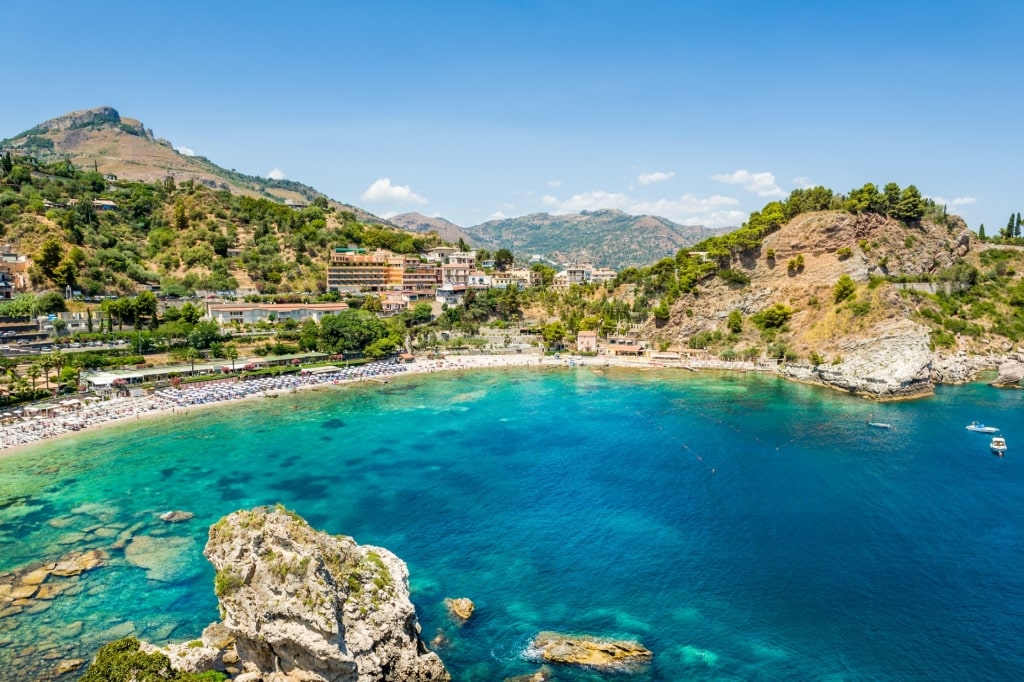
Isola Bella
When the Italian reunification occurred at the end of the 19th century, a period of stability allowed Taormina to establish itself as the ultimate Mediterranean resort town.
It became one of the most popular stops on the Grand Tour—when the children of the landed gentry of Europe would pack their trunks (or their servants would) for an in-person cultural education around various European countries.
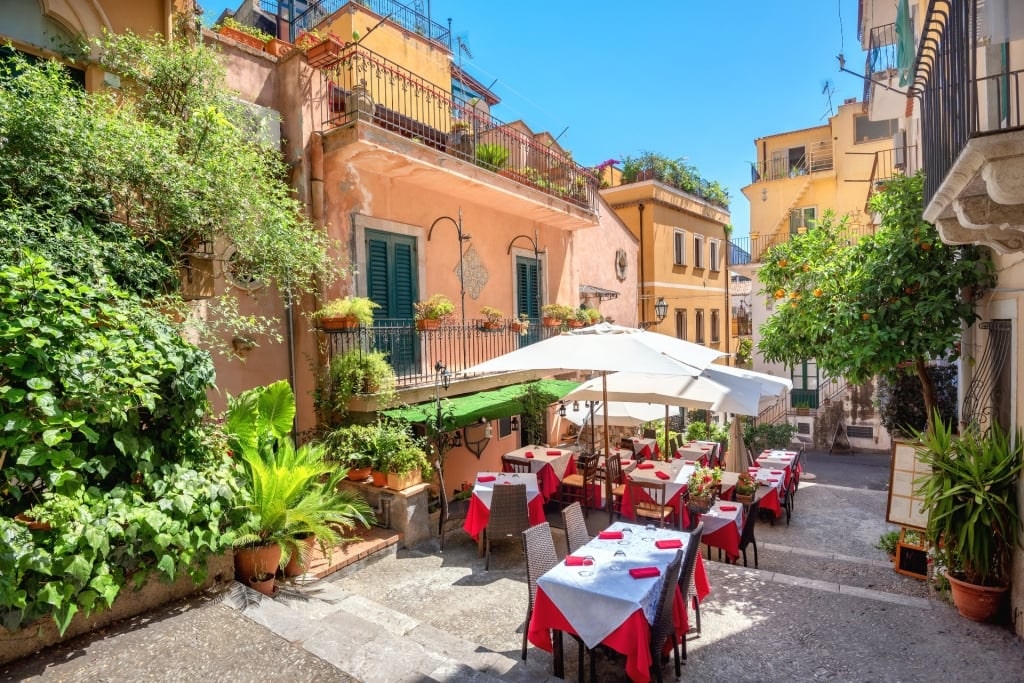
Taormina
Taormina’s orange-fragranced streets became particularly popular with artists. Among those visiting were Alexander Dumas, Gustav Klimt, and Oscar Wilde, as well as the writer D.H. Lawrence who lived here for a few years while writing much of Lady Chatterley’s Lover.
Tips for Visiting Taormina, Italy
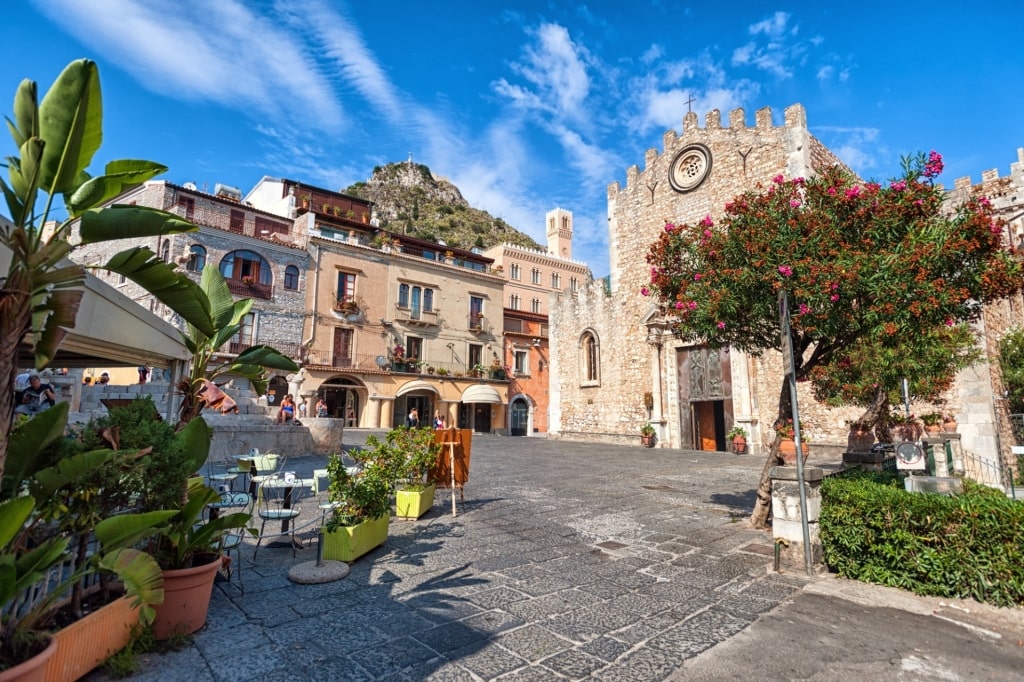
Taormina
The center of Taormina is quite compact, so while some of the snaking alleys can feel endless, you’ll soon find your way back to the central artery of Corso Umberto.
Good shoes are recommended as, due to the town’s hillside position, there are steps. Happily, they’re usually very attractive steps, worn by time with handsome cracks and shaded by rows of citrus trees.
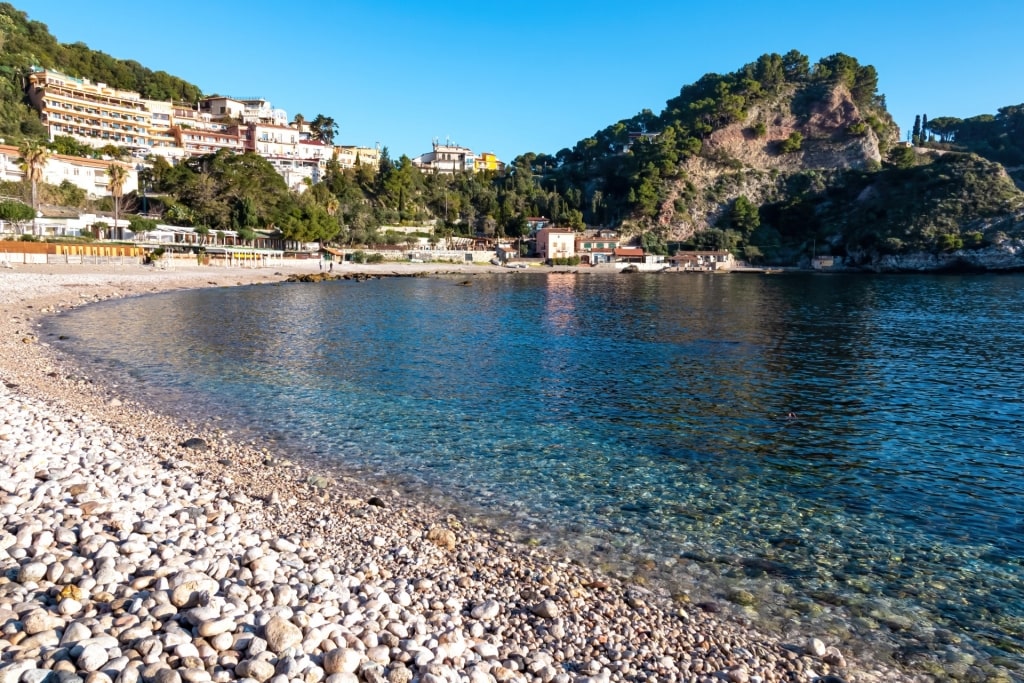
Isola Bella
You could walk down to the beach, but fortunately, there’s also an aerial tramway that whisks people down the cliff every 15 minutes. Board it at the station at via Luigi Pirandello.
While you’re here, do make time to stop for pastries; Taormina is one of the most famous towns in Sicily for baked goods and the window displays of some of the shops are works of art in themselves.
Wildlife & Nature
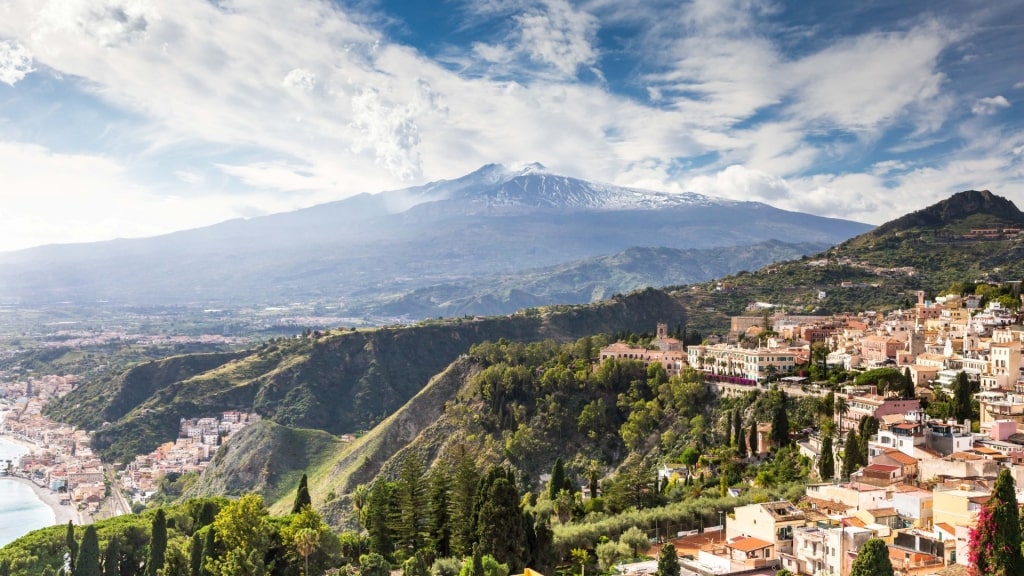
Taormina
The brooding presence of Mount Etna on the horizon is a constant reminder of Siciliy’s volcanic origins. Come early in the season and the mountain may be capped with snow, a beautiful vista on a clear day.
Etna is particularly active and may erupt, sending out a long plume of smoke, or even sparks and flames.
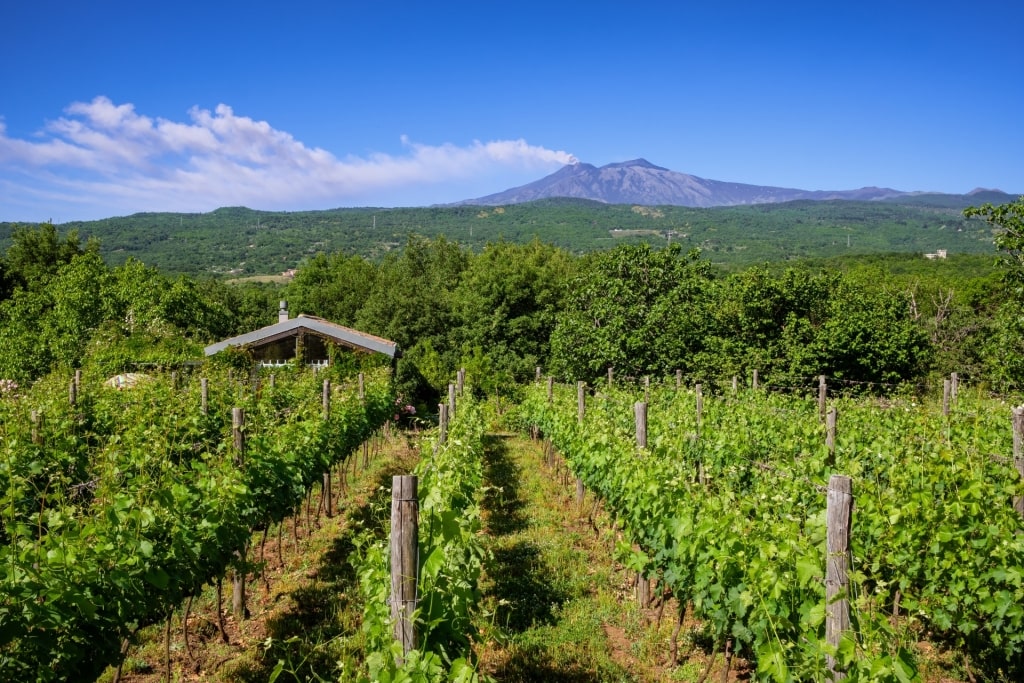
Vineyard
The fertile volcanic soil around the mountain means the landscape around Taormina is lush with vineyards, trees, and vibrant flowers.
Visit the public gardens in town or the nature reserve on nearby Isola Bella, one of the most unique places to visit in Europe, and you’ll get an idea of the exotic species that can thrive here.
Things to Do & Attractions in Taormina
Passeggiata Along Corso Umberto
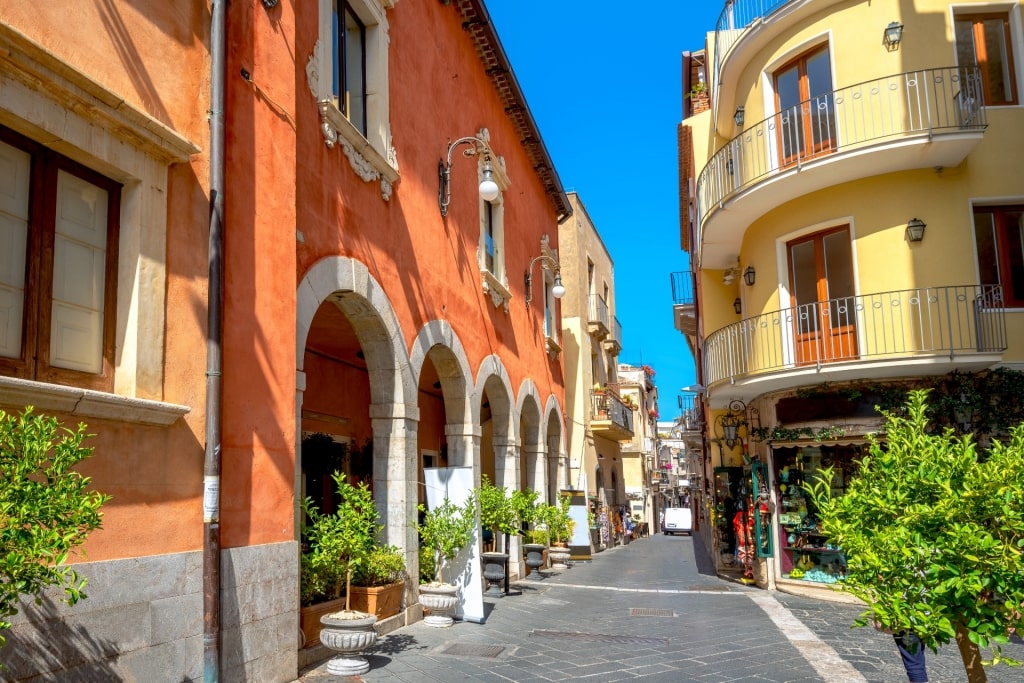
Corso Umberto
The town’s pedestrianized high street is an iconic artery leading from Porta Messina to Porta Catania. It has traced the same route through the town since the time of the original Greco-Roman settlements.

Cannoli
One can only imagine the delight of the early Greeks to discover the flourishing granita and pastry shop scene of the modern Corso Umberto. Pick up a cannoli (a fried pastry tube) filled with fluffy, sweetened ricotta, and browse the upscale boutiques.
Your eye will also be caught by the ancient stone doorways and occasional stone pinecone, intended to bring good luck to the household.
Relax in the Public Gardens
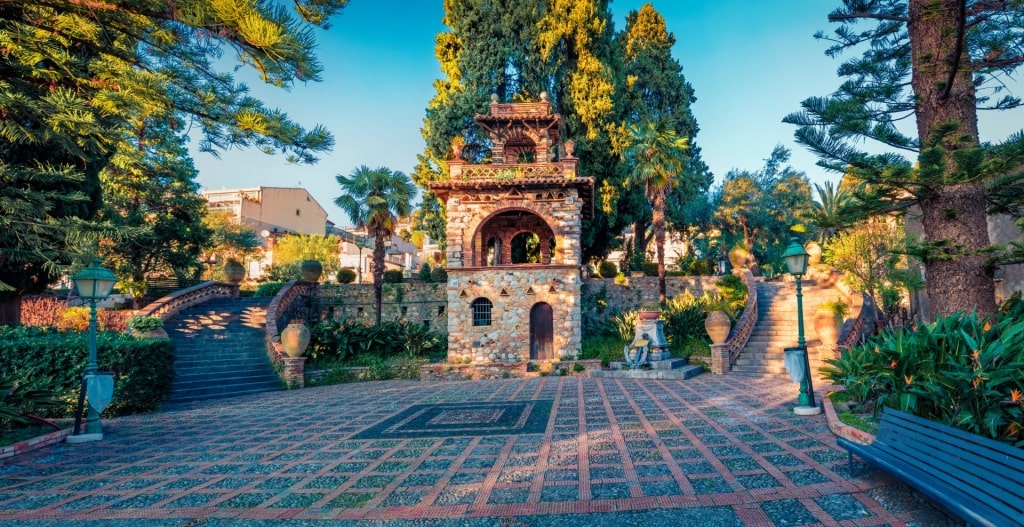
Public Gardens
Find your way out of the hustle and bustle of Taormina’s narrow, atmospheric streets to this Italian garden, ideal for a breather and a shady stroll through an interesting slice of the town’s history.
The central green space for this Sicilian resort town, the Public Gardens of Taormina are also known as “the Villa” by locals.
The villa in question is found in the park’s heart and used to belong to Lady Florence Trevelyan, a Scottish noblewoman who made Taormina her home in the 19th century.
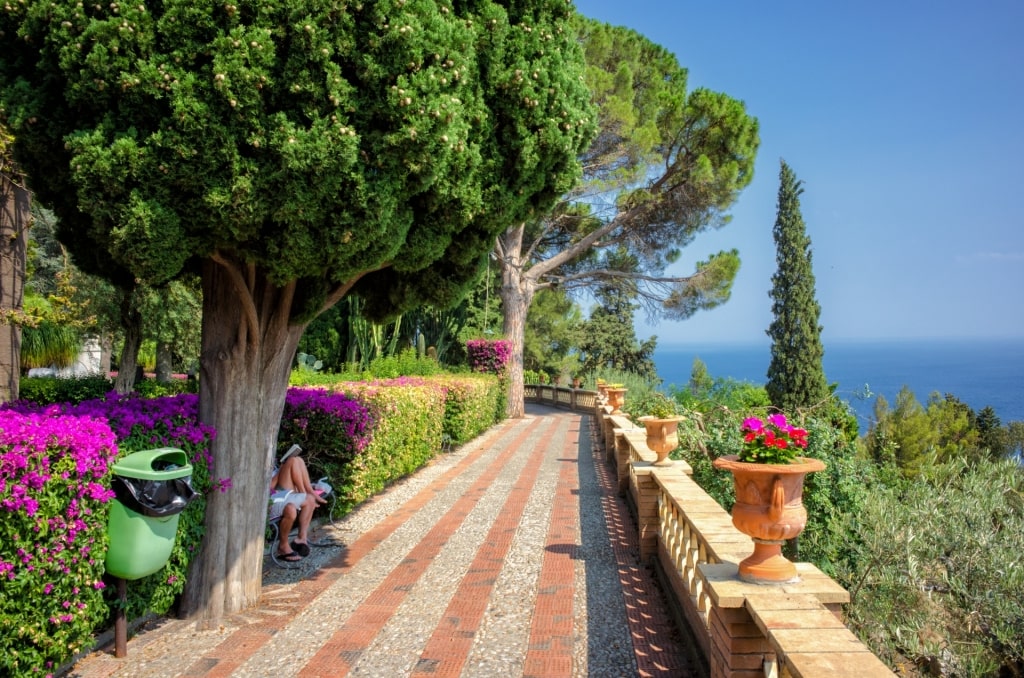
Public Gardens
A keen gardener, she designed what is today the public park. Following its striped paths, you’ll see her eastern-inspired follies amid the stone pines and bushels of bright bougainvillea.
While ostensibly laid out as an English garden, the park also acts as a botanical garden with its mix of indigenous and imported species.
Besides the sense of peace (it can often feel like you’re the only one here) there are incredible views of the coast, the Bay of Naxos, and the brooding hulk of immense Etna on the skyline.
Soak Up the Sun on Isola Bella
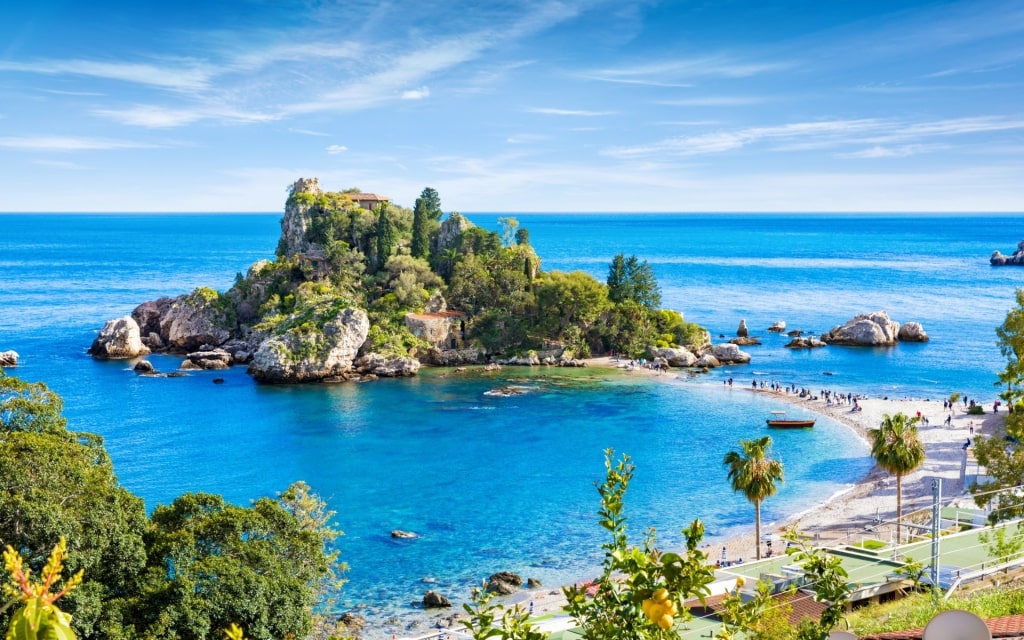
Isola Bella
Before Lady Trevelyan set to work on the gardens that now make up Taormina’s main park, she lived on the islet connected by a white sand isthmus to Isola Bella beach.
When (rather than “if”) you make your way down by the cable car that connects Isola Bella to the town, you’ll be drawn to explore the island which has a house that used to belong to the Scottish noblewoman. Rumor has it that she was essentially banished from the UK after having been romantically involved with Queen Victoria’s son.
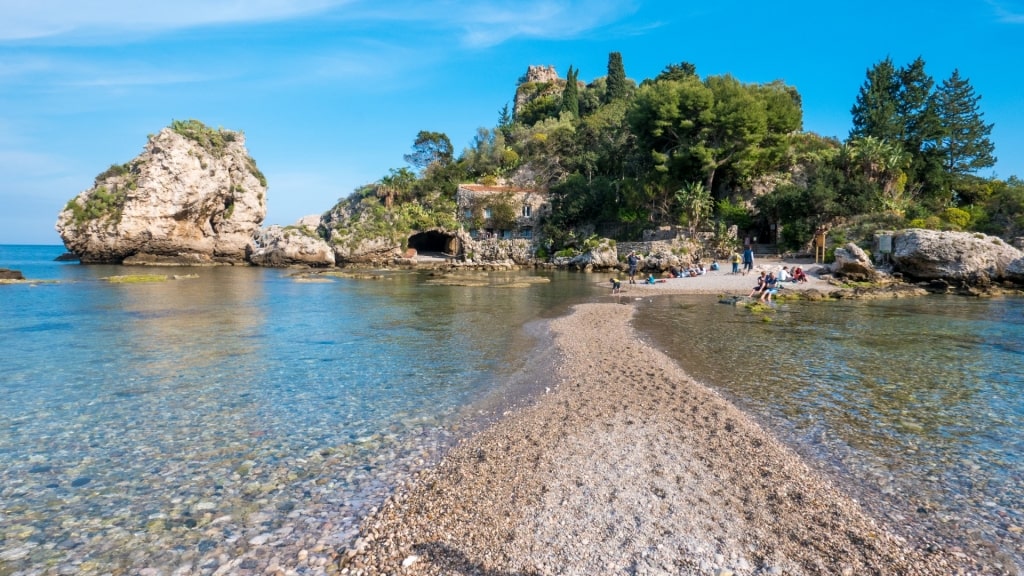
Isola Bella
Whatever the truth, it’s undeniable that Trevelyan was a keen gardener. The island is now a protected nature reserve, preserving her mixed plantings of foreign and indigenous species. One of the most romantic places in Italy, it’s a joy to explore, feeling the cooling sea breezes, and listening to the lap of the sea against the rocks.
The isthmus comes and goes with the tides, but whether it’s there or not Isola Bella is an undeniably lovely arrangement of Italian beach, turquoise shallows, and an exotically foliaged island.
Visit the Greek Theater of Taormina
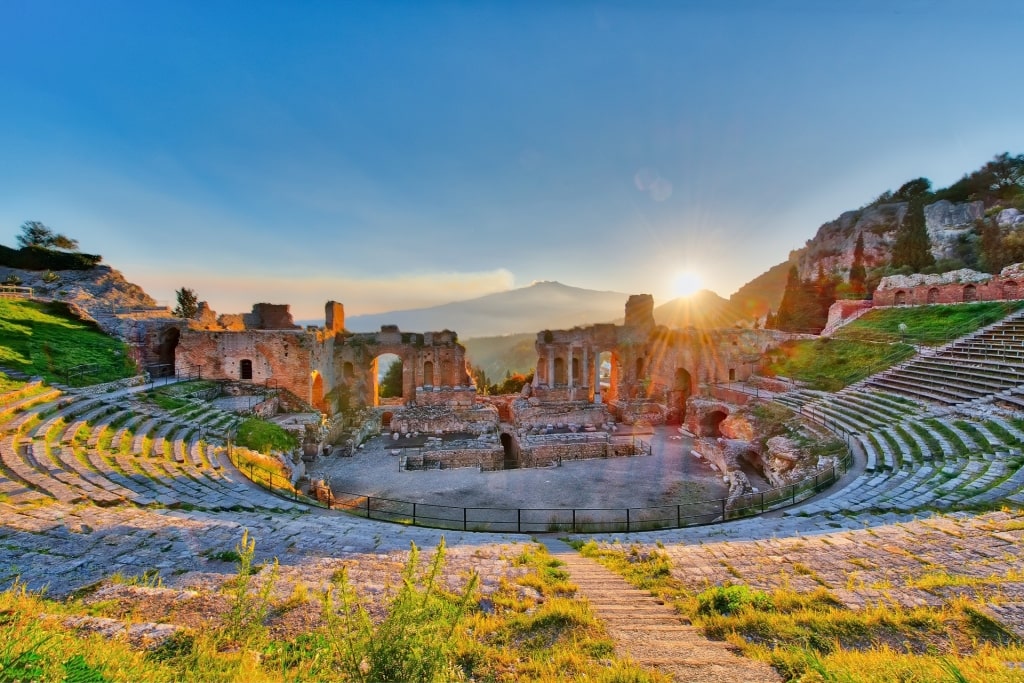
Greek Theater of Taormina
Taormina’s Greek Theater, one of the best places to visit in Southern Italy, hovers above the town, embedded in the side of Mount Tauro.
This third-century amphitheater was built by the Greeks was renovated by the Romans, who added more space and embellishments such as statues and columns. The Romans also transformed it into a multi-purpose venue, hosting games and gladiatorial combat.
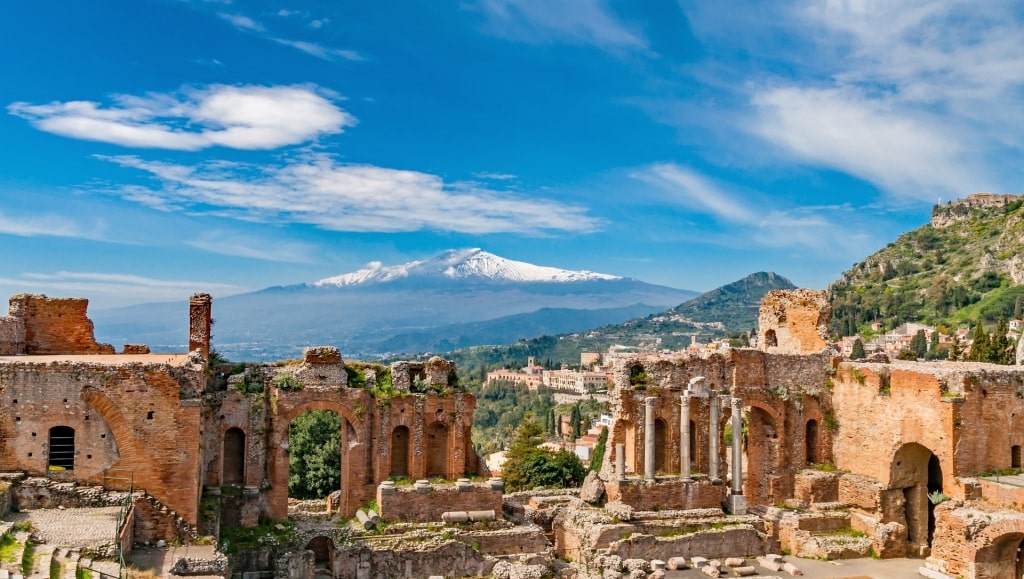
Greek Theater of Taormina
Today it’s the second-largest theater in Sicily, with a full program over the sunnier months of music, plays, and more. It’s reached by following Corso Umberto until you arrive at Via Teatro Greco. Turn right up the hill and you’ll find this striking edifice at the end.
Of course, for many, the real drama is behind the stage: the incredible views of Etna snagging clouds on its cone, and the Sicilian coastline.
Stop for Coffee on Piazza IX Aprile
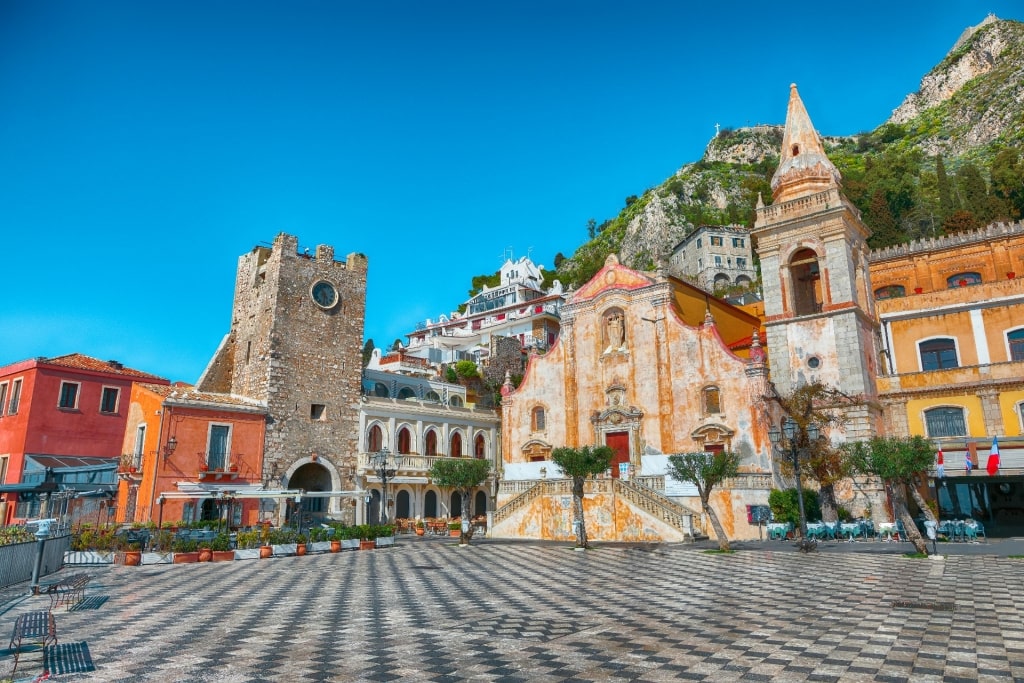
Piazza IX Aprile
Stroll Corso Umberto and at its southerly end, the narrow road opens up into a beautiful checkerboard square surrounded by antique buildings.
Often called Taormina’s “living room”, Piazza IX Aprile is the town’s main square. Most likely, you’ll rush to look out over the view of the Bay of Naxos and Etna, but there’s more to this square than just panoramas and a cup of lemon granita at one of the cafés.
The square is named for the date when it was believed that Garibaldi landed in Sicily to begin the island’s push for independence from the Bourbons.
The rumor was false; the famous leader of the Risorgimento wasn’t to arrive until a month later. Nevertheless, the citizens of Taormina wanted to memorialize that electrifying sense of hope that they’d felt.
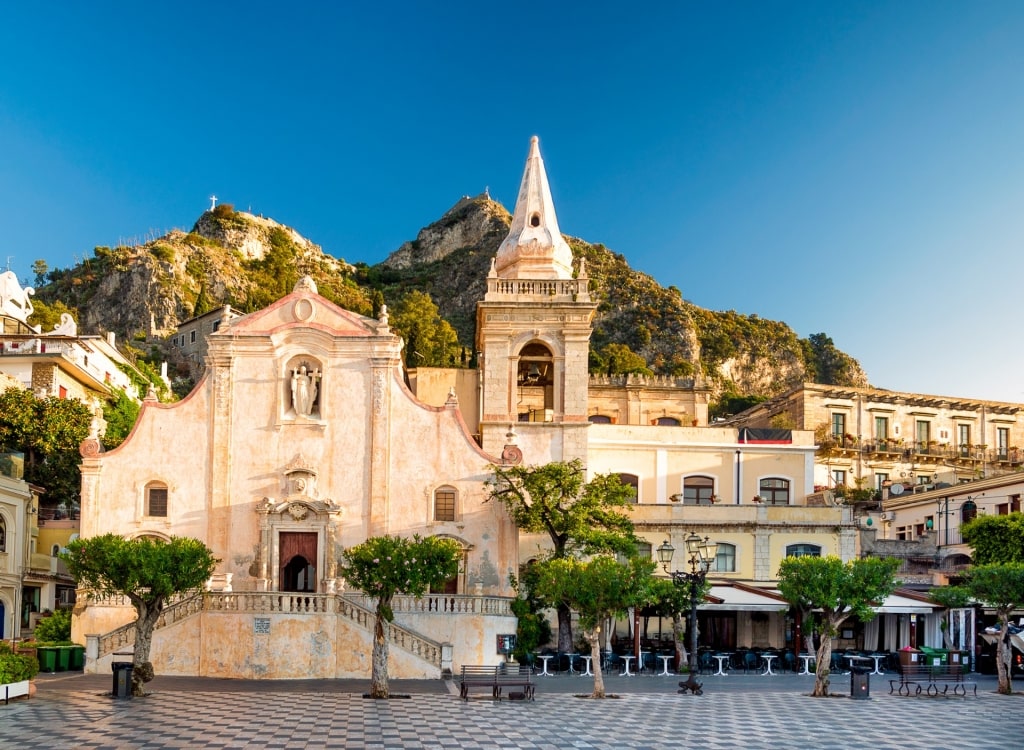
Church of San Giuseppe
More history can be uncovered in the significant buildings surrounding the square. In reverse order of agedness, there’s the cool interior of the baroque 17th-century Church of San Giuseppe.
A second church, from the 15th century, has been converted into the town’s library. Finally, there’s the 12th-century clock tower that has been rebuilt several times over the centuries.
Explore Fiery Mount Etna
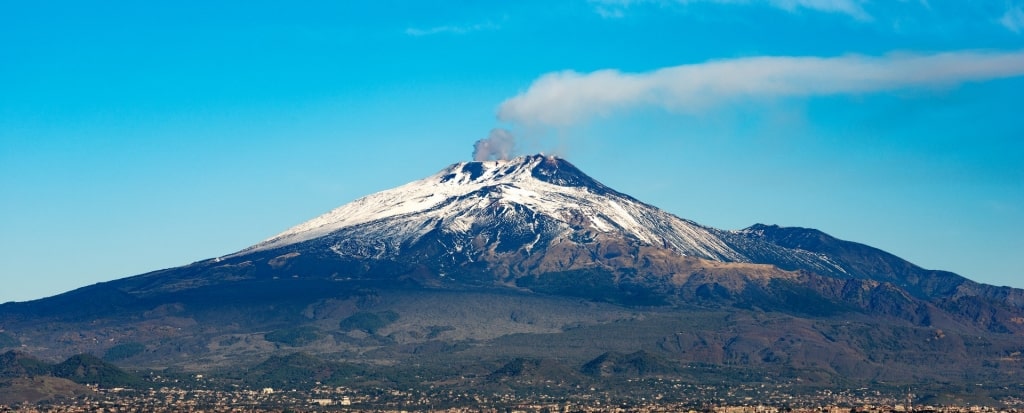
Mount Etna
Taormina is a superb base from which to explore Sicily’s imposing volcano. Etna’s wooded slopes are used by the citizenry as a place for nature hikes and barbecues in the summer—and skiing in the winter.
You’ll also find vineyards with delicious products expressing the volcanic terroir out of which the vines grow.
For many, the volcanic ground is the chief attraction, and one of the best ways to see it is with a visit to the Silvestri craters. Formed during the 1892 eruption and at an altitude of over 6,000 feet above sea level (just over an hour’s drive from Taormina), the craters are named for the volcanologist who dedicated his life to studying Etna’s rumblings.
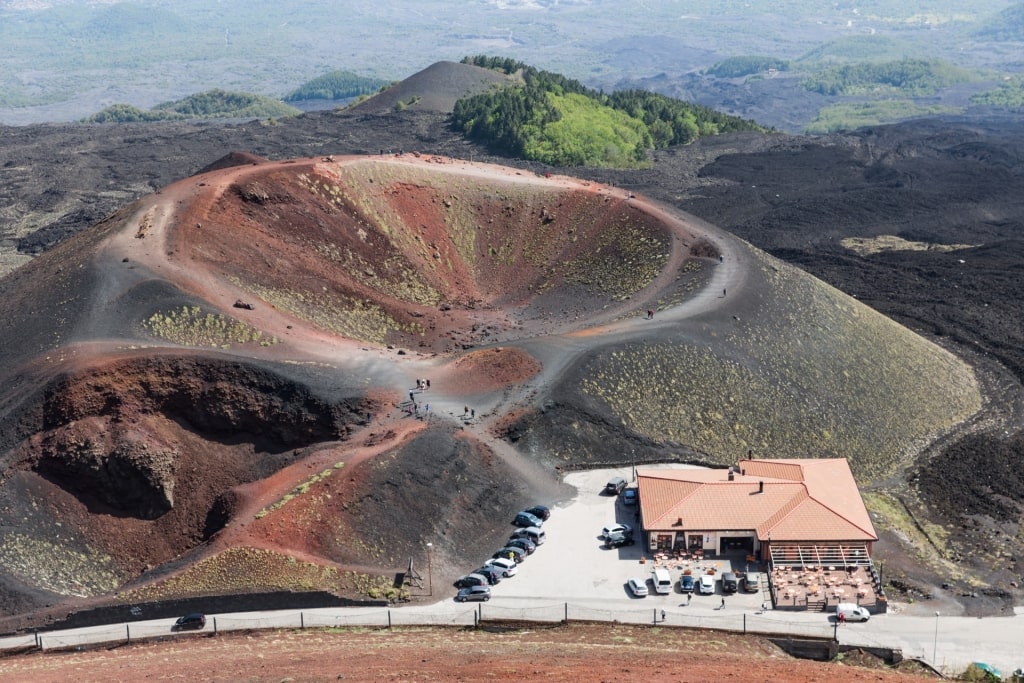
Silvestri craters, Mount Etna
Aside from being one of the best hikes in Italy, a walk around the rims of these craters feels like a hike on a different planet. Great sooty dunes rise up, and you leave perfect impressions of your soles in the glittering magnesium sand.
The red clay dust found here is used for tennis courts, and the basalt harvested from here makes up the island’s sidewalks and roads, including Corso Umberto.
The views, naturally, are stupendous. Be sure to bring a light jacket as, outside of the very warmest weather, there can be a chill in the breeze.
Read: Stunning Natural Wonders to See in Italy
See Ancient Syracuse
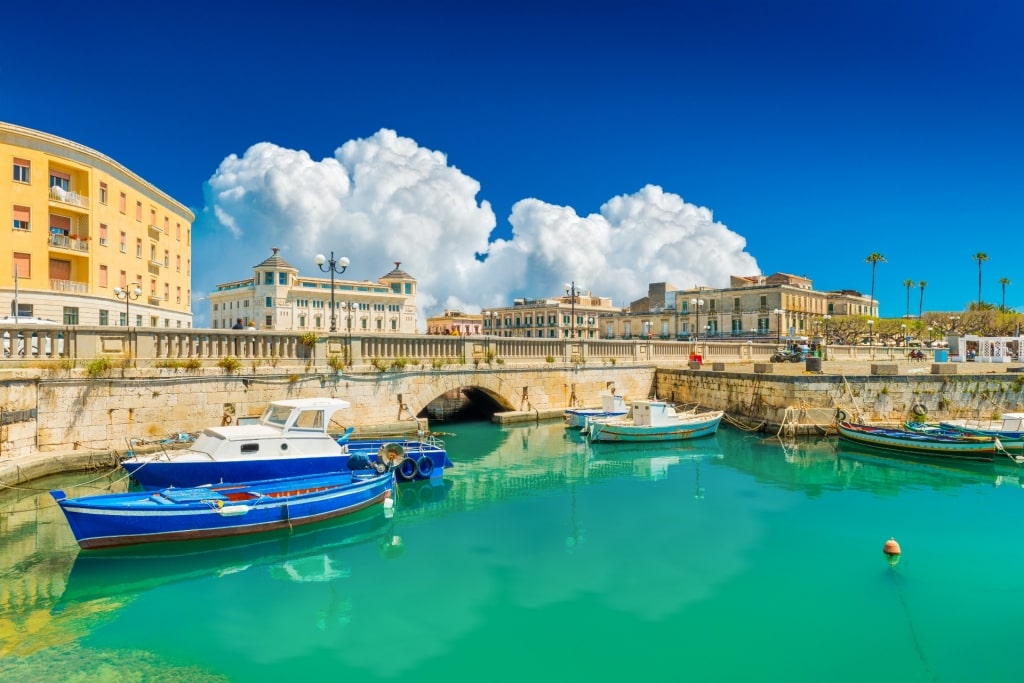
Ortigia, Syracuse
Follow the coast south, past Etna, for another half an hour, and you’ll reach Syracuse. One of the best places to visit in Sicily, Syracuse’s historic center is a vision of white limestone hovering above the startling blue of the sea.
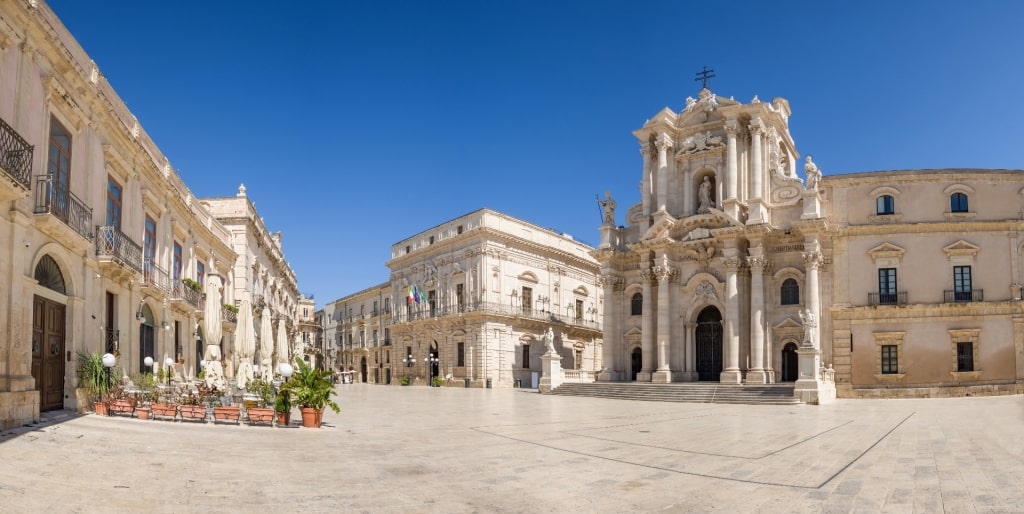
Ortigia, Syracuse
Once the ancient world’s largest city—and Archimedes’ hometown—it’s been inhabited since the 8th century BC. It’s not hard to see why when you visit.
Its historic heart is Ortigia—a maze of honey-hued palazzi, vibrant markets, and waterfront restaurants offering fried calamari and other dishes perfect with a spritzy Italian white wine.
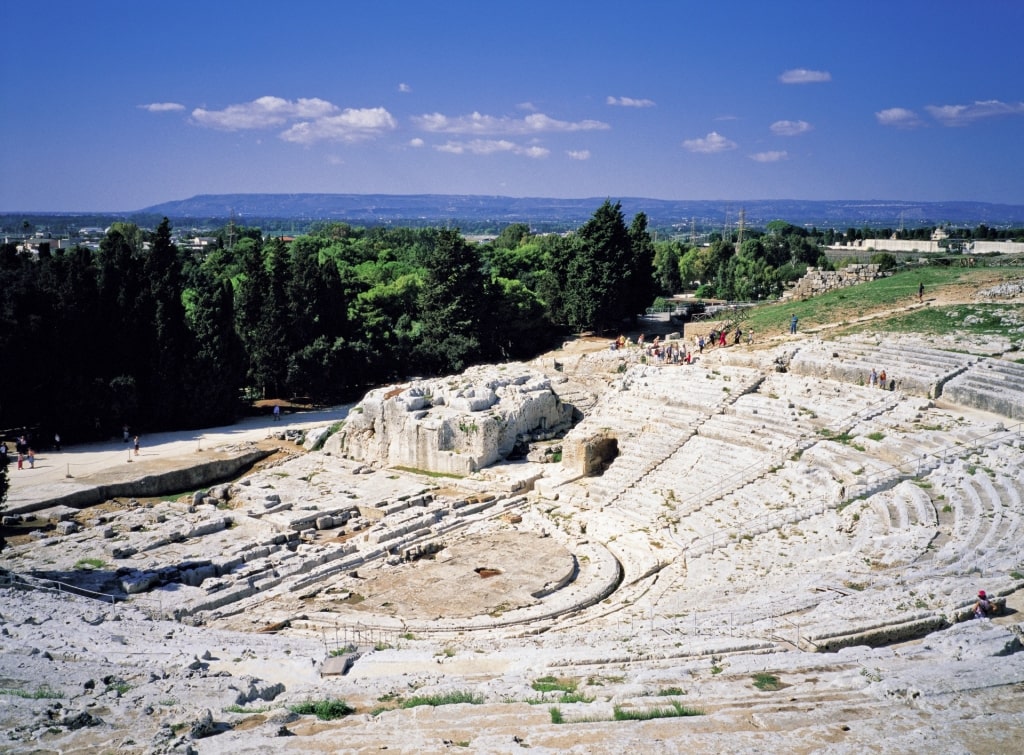
Neapolis Archaeological Park, Syracuse
Cross one of the two bridges leading to Ortigia and you can make your way to the Neapolis Archaeological Park. Full of Greek and Roman ruins, the park really emphasizes the city’s ancient pedigree.
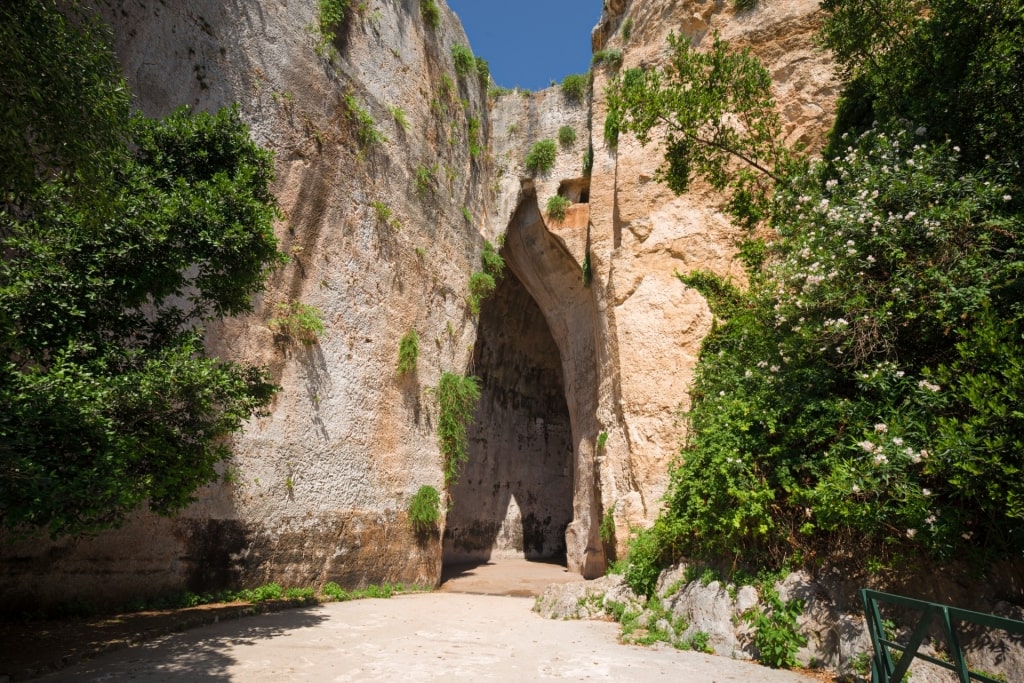
Ear of Dionysus, Syracuse
This area was once used as quarries, supplying the limestone that built Ortigia. Explore the Ear of Dionysus, a former quarry gouged by ancient chisel marks. This was where the tyrant Dionysius I apparently imprisoned his enemies and would eavesdrop on them from the crack in the roof above.
Less sinister are the Latomia del Paradiso—gardens of jasmine, citrus, and creeping capers that make for a shady, aromatic stroll.
Food & Drink

Cannoli
The cuisine of Sicily, while recognizably Italian, has its own distinct style and ingredients. Its history can be discerned in different flavors. The Spanish introduced tomatoes and figs; sugar cane came from the Arabs; and wine from the Greeks.
For sweet things while walking around Taormina, stop into the renowned Minotauro Pastry Shop on Via di Giovanni. Choose, if you can, from its colorful selection of pastries, marzipan, and nougat treats (and, of course, candied ricotta-filled cannoli) from this 40-year-old Taormina stalwart.

Etna Spritz
A historic option for your pre-dinner aperitivo—and the quintessential fantasy Italian terrace—can be found at the luxury Grand Hotel Timeo. Enjoy the view of Mount Etna and the Sicilian coastline that was also appreciated by D. H. Lawrence, Truman Capote, and Tennessee Williams, among others. Sip an Etna Spritz to the soundtrack of the tinkling piano.
There are a number of Michelin-starred restaurants in Taormina, Italy, but perhaps its most impressive is La Capinera. Chef Pietro D’Agostino, who runs a second restaurant in the town, delivers incredible tasting menus with dishes such as stuffed baby calamari, or caramelized duck with chestnut honey.
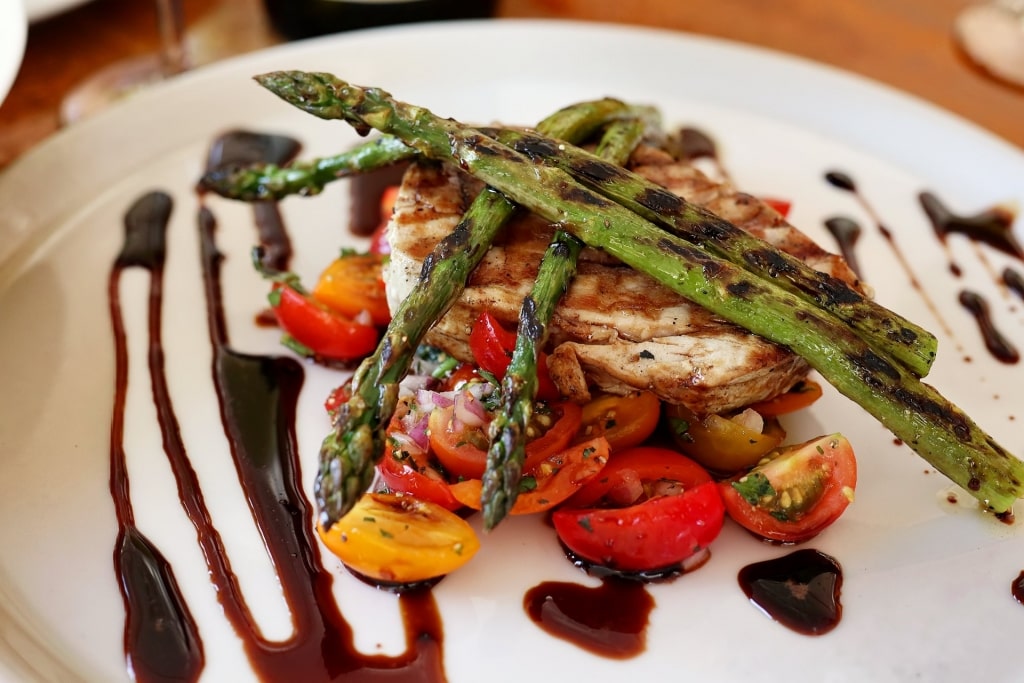
Tuna
For something less rarified but no less delicious, try Osteria RossoDiVino in central Taormina. It offers superb, straightforward classics such as seared tuna or anchovy tempura.
Best Time to Visit Taormina
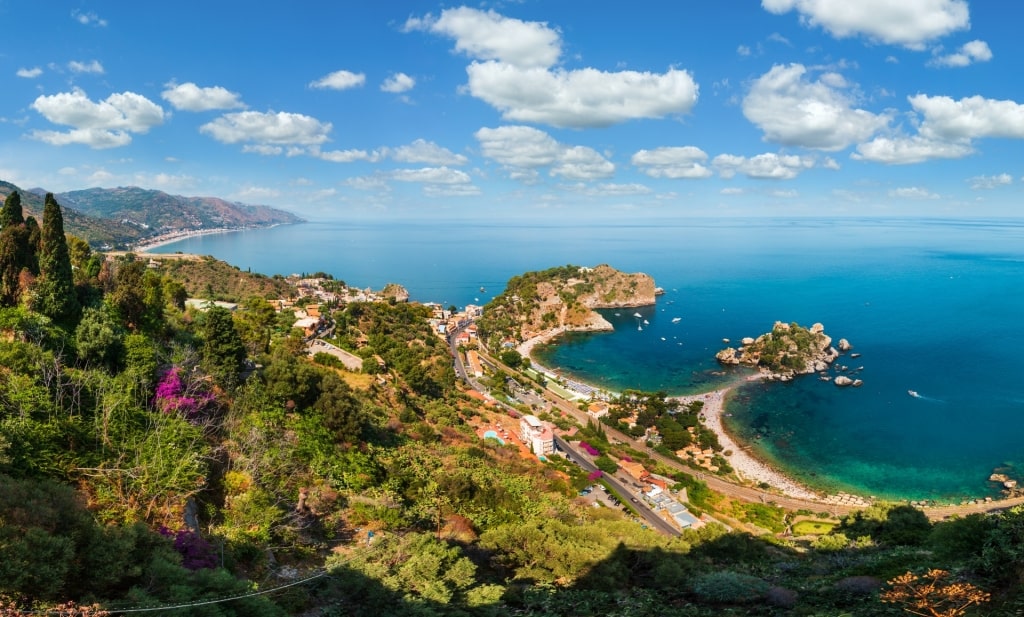
Taormina
The Mediterranean island of Sicily is stunning in the summertime. The faded colors of its ancient architecture are vivid in the plentiful sunshine, and its shallows shine an electrifying bright blue.
The thermometer on your weather app will rise to between 75°F and 87°F, driving you with enthusiasm to gorgeous Isola Bella for another wade in the warm, clear seas.
Summer in Italy generally means similarly high temperatures wherever you go. However, arrive between May to June or September to October, and the inland heat can be more forgiving by about ten degrees. This allows you to taste a glass of chilled Catarratto on the terrace just that little earlier in the afternoon.
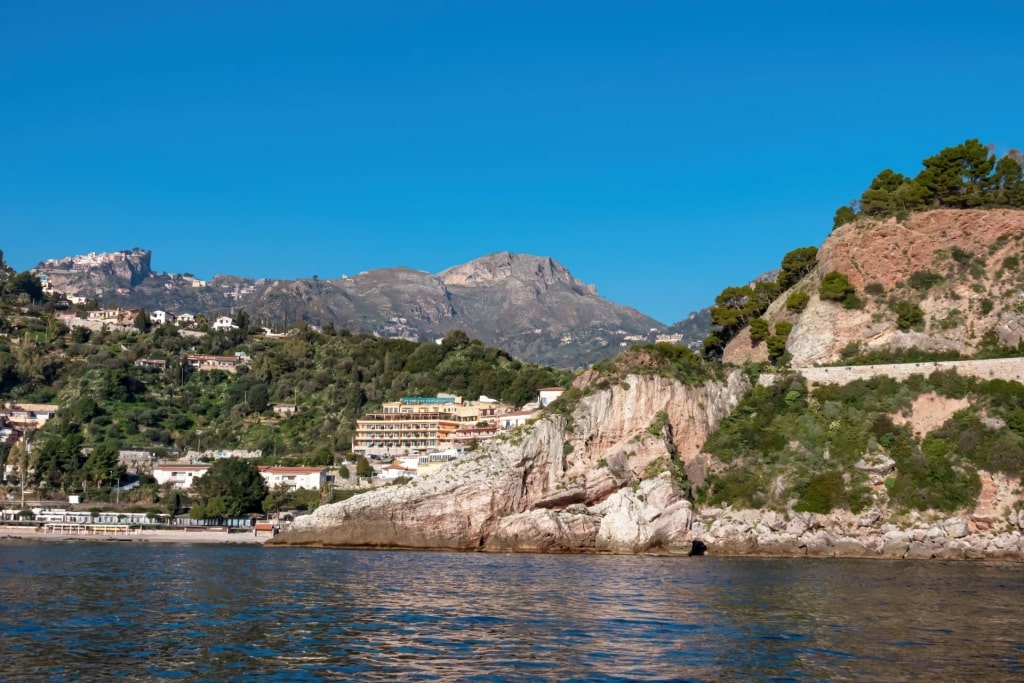
Taormina
Discover the Greek Theater, volcano views, and sweet cannoli of Taormina, Italy, on a cruise to the bel paese. Browse our cruises to Sicily and book your next unforgettable vacation.
